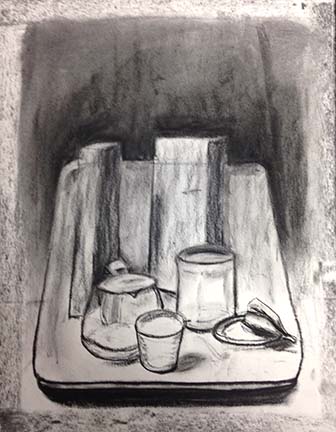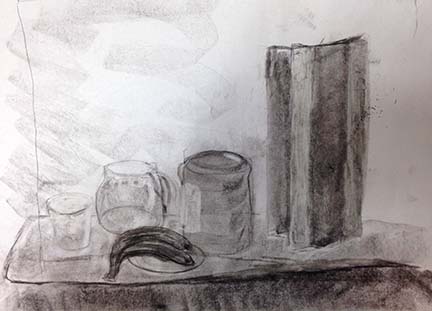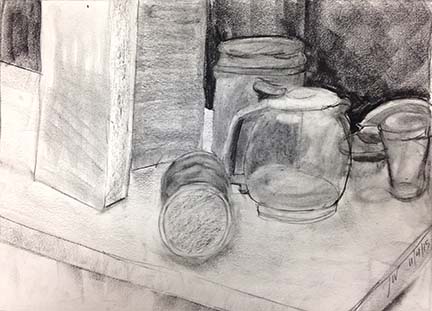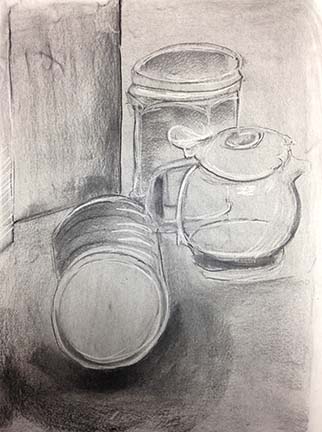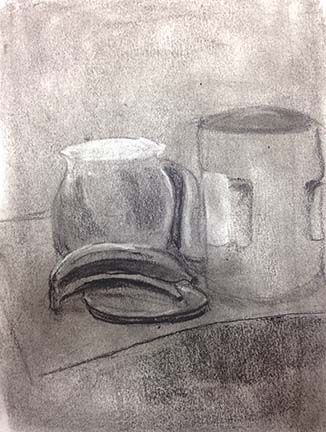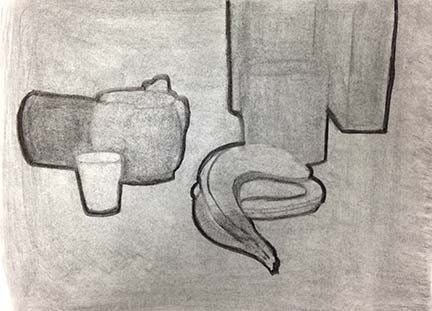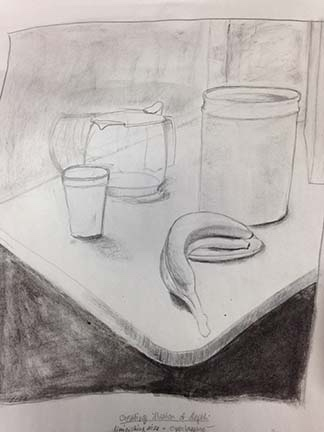Making art can feel dangerous and revealing. Making art is dangerous and revealing. Making art precipitates self-doubt, stirring deep waters that lay between what you know you should be, and what you fear you might be. Yet viewed objectively, these fears obviously have less to do with art than with the artist. Fears are coincidental. They are sneaky and disruptive, disguising themselves as laziness, resistance to deadlines, irritation with materials or surroundings, distraction over the achievements of others-- anything that keeps you from giving your work your best shot. What separates artists from ex-artists is that those who challenge their fears, continue; those who don't, quit. Each step in the art making process puts that issue to the test.
Art & Fear, David Bayles & Ted Orland
A selection of drawings
from my Wednesday class
We have continued our conversation about space by talking about figure- ground relationships. Looking at a group of objects, we discussed using contrast to create an illusion of depth. Student's used these principles to record their observations of how objects related to each other and the area between and around them.
Using a progressive still life, students made two drawings-- first drawing objects as they were placed one-by-one onto the table from front to back. In the second drawing they viewed the same collection of objects through a viewfinder-- and considered the "space" between and around objects.
Take a moment and compare the space -- how does it feel? Space can refer to the feeling of depth. Real space is 3D; in visual art, when we create the feeling or illusion of depth, whether it is deep or shallow, we call it space. Drawings are similar in composition and subject matter--familiar objects on a table. Try to analyze why, in terms of formal elements, the space feels the way that it does. You might think of value (lightness or darkness), placement, or notice the difference in the type of line used. What else do you see?
